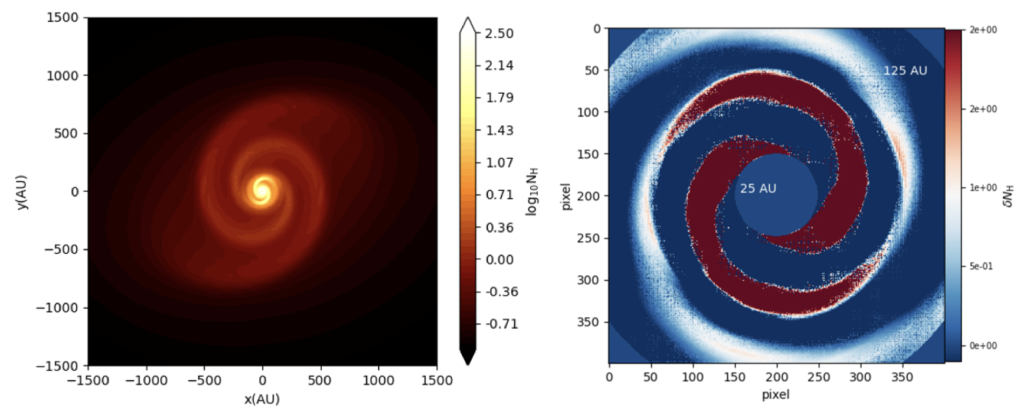Misalignment between rotation and magnetic fields has been suggested to be one type of physical mechanism that can ease the effects of magnetic braking during the collapse of cloud cores leading to the formation of protostellar disks. However, its essential factors are poorly understood. Therefore, we perform a more detailed analysis of the physics involved. We analyze existing simulation data to measure the system torques, mass accretion rates, and Toomre Q parameters. We also examine the presence of shocks in the system. While advective torques are generally the strongest, we find that magnetic and gravitational torques can play substantial roles in how angular momentum is transferred during the disk formation process. Magnetic torques can shape the accretion flows, creating two-armed magnetized inflow spirals aligned with the magnetic field. We find evidence of an accretion shock that is aligned according to the spiral structure of the system. Inclusion of ambipolar diffusion as explored in this work has shown a slight influence in the small-scale structures but not in the main morphology. We discuss potential candidate systems where some of these phenomena could be present.




Related Publications
- Wang W; Väisälä MS; Shang H; Krasnopolsky R; Li Z-Y; Lam KH; Yuan F, “Magnetic Spirals in Accretion Flows Originated from Misaligned Magnetic Fields” , ApJ: 928(1), id.85 (23pp), Mar, 2022 [SCI] ( ADS | Fulltext )
- Väisälä MS; Shang H; Krasnopolsky R; Liu S-Y; et al., “Time Evolution of 3D Disk Formation with Misaligned Magnetic Field and Rotation Axes”, ApJ: 873(2), id. 114 (22 pp.), Mar, 2019 [SCI] ( ADS | Fulltext )
- Li Z-Y; Krasnopolsky R; Shang H, “Does Magnetic-field-Rotation Misalignment Solve the Magnetic Braking Catastrophe in Protostellar Disk Formation?”, ApJ: 774(1), 82, Sep 1, 2013 [SCI] ( ADS | Fulltext )

